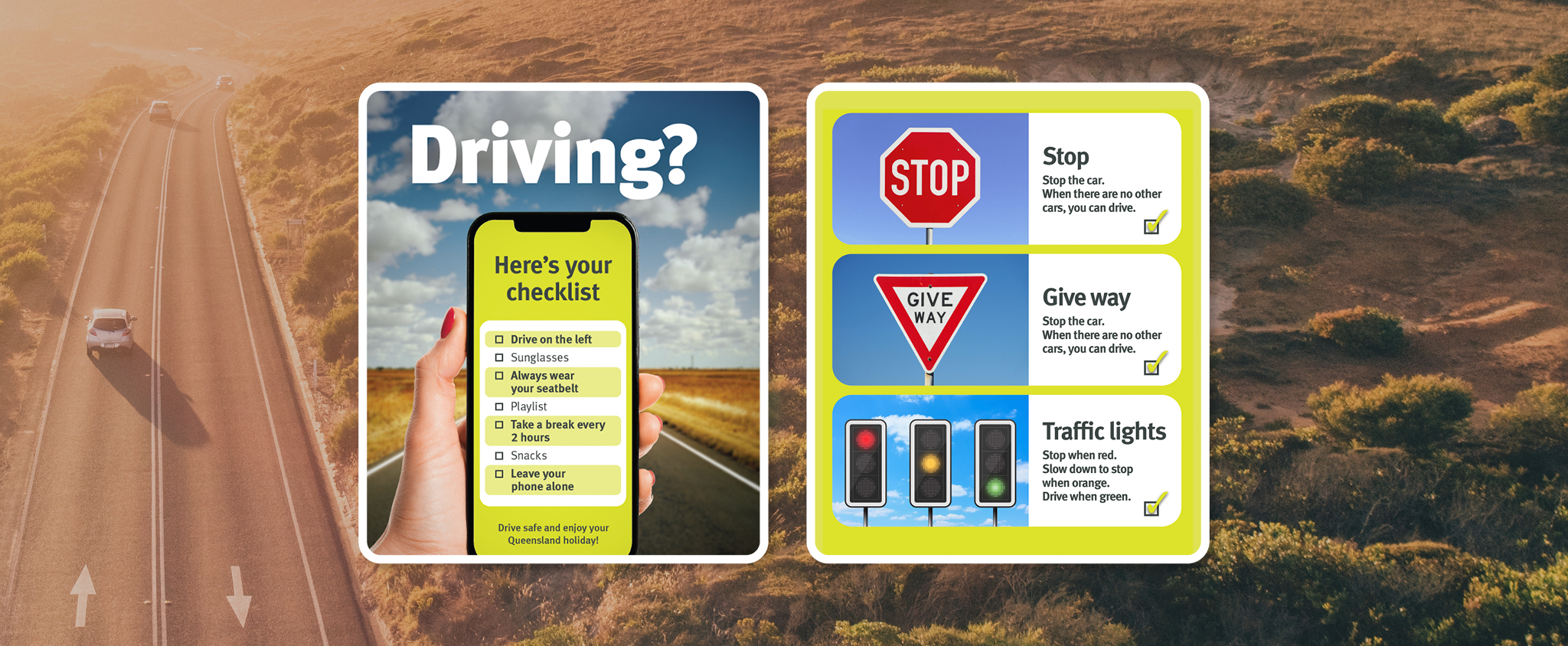Will you need to drive whilst having a work-and-travel adventure across Australia? If so, it’s important you know the road rules to keep you and your travel companions safe.
Australia has vast landscapes and diverse destinations that make it a dream to explore. However, driving in Australia – and especially long distances – comes with its own set of challenges and responsibilities. Before you start driving, it’s crucial to familiarise yourself with Australian road rules and driving conditions.
Key things to consider for safe travels:
- Drive on the left – unlike most countries, Australians drive on the left-hand side of the road. If you’re not used to this, practise before you drive on our main roads.
- Stick to the speed limits – speed limits vary across states and territories, with urban areas typically having a 50 km/h default, and highways ranging from 100 km/h to 110 km/h. Always be mindful of posted signage and adjust your speed accordingly.
- Know what the colour means on a traffic light – when the light is red it means you must stop. Slow down to stop when it’s orange, and you can safely drive through the intersection when the light is green.
- Plan your journey – when travelling in Australia you can cover long distances, so it’s important to plan your journey carefully – taking into account rest stops, fuel stations and accommodations, particularly if you’re embarking on a long-distance drive.
- Prepare for remote travel – parts of Australia are sparsely populated, with long stretches of road between towns and services. If your journey takes you through remote areas, ensure you’re adequately prepared. Carry extra water, food and emergency supplies in case of unexpected delays or breakdowns. It’s also advisable to have a reliable communication device, such as a satellite phone or emergency beacon, in case of emergencies.
- Watch out for wildlife – you need to be extra cautious – especially at dawn, dusk, and nighttime – as animals like kangaroos and emus may wander onto the roads. Reduce your speed and be prepared to brake suddenly.
- Respect the conditions – be mindful of the weather and road conditions. Adjust your driving accordingly for rain, fog, or unsealed roads.
- Stay alert and rested – long hours behind the wheel can take a toll on even the most experienced drivers. Avoid fatigue by taking regular breaks and alternating driving if travelling with companions. Be mindful of early warning signs of fatigue, such as yawning, heavy eyelids or difficulty maintaining concentration.
- Don’t use your mobile phone – it’s illegal to use a handheld mobile phone when driving for calls or texts, and you must not rest your phone on any part of your body or you may face a fine.
- Driving with an overseas licence – you can drive on Queensland roads with a valid overseas licence, but you have to follow the vehicle authorisation and licence conditions set by your overseas licence authority. Always carry your overseas licence and an International Driving Permit or English translation (if applicable) when driving.
- Seatbelts save lives – don’t forget that you and any passengers must wear a seatbelt when driving.
By following these tips and being informed, you can stay safe on the roads while working and holidaying in Australia.





